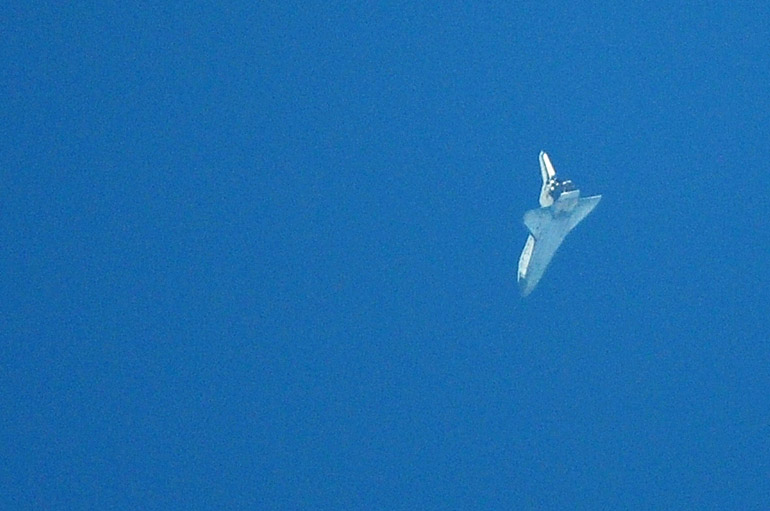
Shuttle Discovery begins a loop to further slow its speed before landing at approximately 220 mph at 11:57 a.m. Wednesday.
Space shuttle Discovery landed for the final time just before noon Wednesday, March 9, at Kennedy Space Center.
My newspaper insists to readers that they can't see the shuttle very well as it descends to the Shuttle Landing Facility. Most settle for simply listening to the two sonic booms as the spaceship breaks the sound barrier over Brevard County. Heard throughout Central Florida as the spacecraft bisected the state Wednesday, the racket signaled its arrival on the Space Coast about four minutes before the landing.
The prevailing thought is that the shuttle's descent speed -- 20 times faster than a commercial airliner's -- and angle of approach -- seven times steeper than that of your run-of-the-mill Southwest 737 -- make the relatively tiny shuttle difficult to pick out.
Having viewed several landings from Titusville's Space View Park -- approximately 13 miles across the Indian River Lagoon from KSC -- I can assuredly say it's not too difficult. Especially when you have help.
On Wednesday, more than 200 people were on hand in Titusville, filling up all the various paved parking options in the immediate area. Typically, I've seen only 50 for landings.
But the advantage of more spectators was that they helped pick out the shuttle and discern it from the various airplanes and clouds. The Florida sky is usually bluest in the morning, and that was the case Wednesday. The weather was ideal, nearly perfect. It was easy to find the shuttle against such a blue backdrop. What clouds were hanging around made for more interesting photos.
Just after the sonic booms, people started pointing. I followed their direction, spotted the shuttle, trained my 500mm Sigma lens onto the spaceship and documented its descent.
My newspaper insists to readers that they can't see the shuttle very well as it descends to the Shuttle Landing Facility. Most settle for simply listening to the two sonic booms as the spaceship breaks the sound barrier over Brevard County. Heard throughout Central Florida as the spacecraft bisected the state Wednesday, the racket signaled its arrival on the Space Coast about four minutes before the landing.
The prevailing thought is that the shuttle's descent speed -- 20 times faster than a commercial airliner's -- and angle of approach -- seven times steeper than that of your run-of-the-mill Southwest 737 -- make the relatively tiny shuttle difficult to pick out.
Having viewed several landings from Titusville's Space View Park -- approximately 13 miles across the Indian River Lagoon from KSC -- I can assuredly say it's not too difficult. Especially when you have help.
On Wednesday, more than 200 people were on hand in Titusville, filling up all the various paved parking options in the immediate area. Typically, I've seen only 50 for landings.
But the advantage of more spectators was that they helped pick out the shuttle and discern it from the various airplanes and clouds. The Florida sky is usually bluest in the morning, and that was the case Wednesday. The weather was ideal, nearly perfect. It was easy to find the shuttle against such a blue backdrop. What clouds were hanging around made for more interesting photos.
Just after the sonic booms, people started pointing. I followed their direction, spotted the shuttle, trained my 500mm Sigma lens onto the spaceship and documented its descent.

Photos such as this one are cropped in the middle, making the shuttle a little larger relative to the picture's edges. That's just so you can actually see it. My lens is powerful, but the shuttle still was tens of thousands of feet up when I snapped this shot.
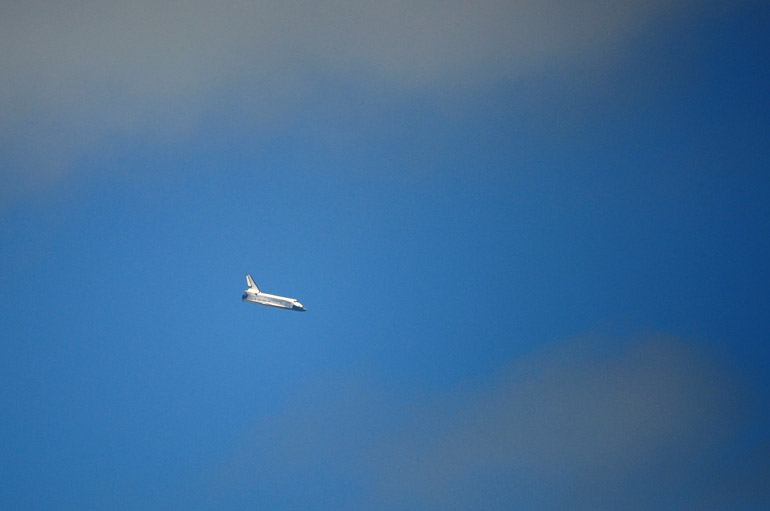
Discovery weaved in and out of clouds hanging from an otherwise blue sky.
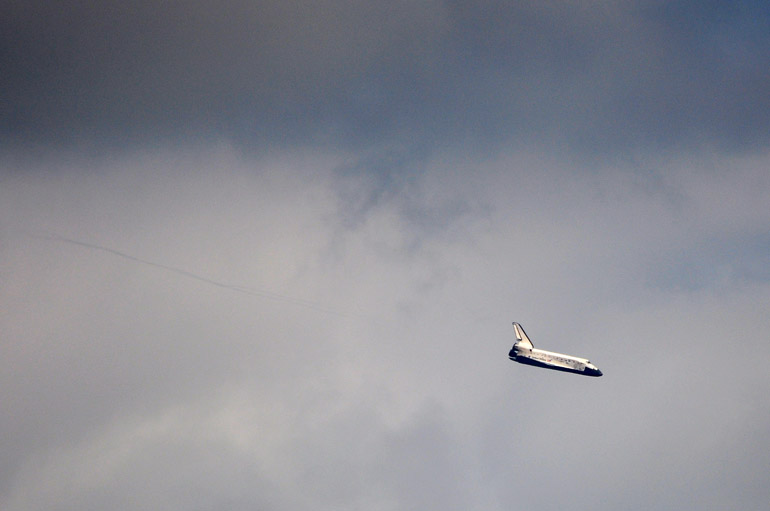
Some condensation from the shuttle's wings tips materialized upon descent, creating a slight trail.

I managed to track Discovery fairly well as it approached the runway -- spare for one time when I looked away to remove my sunglasses, then retrained my lens on a shuttle training aircraft instead of the actual shuttle. The airplane's pilot performs various tasks for a landing, including weather reconnaissance.
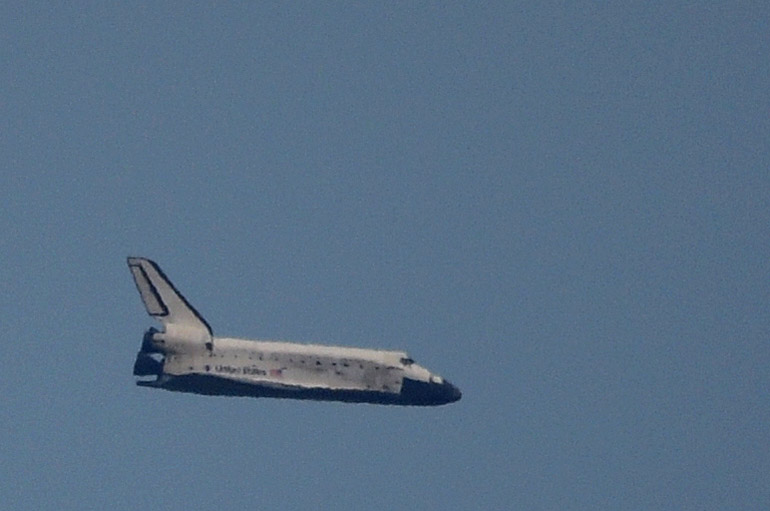
This is cropped extremely close.
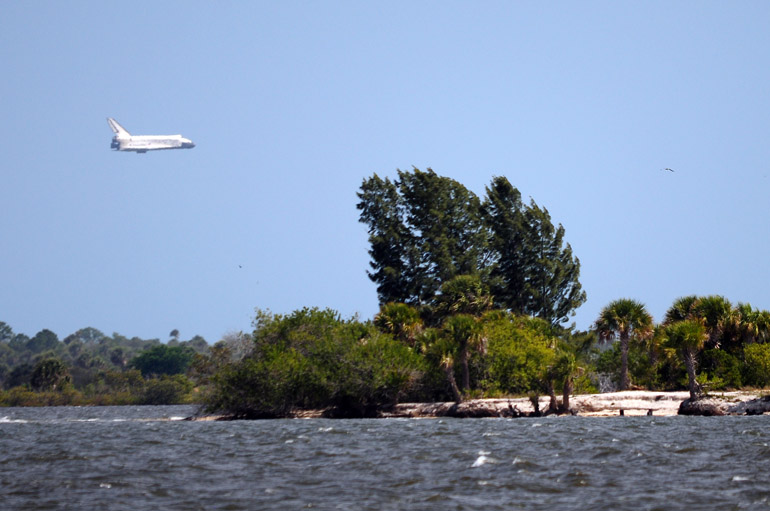
The shuttle's landing gear began to drop as I snapped this photo, which features some islands in the foreground.
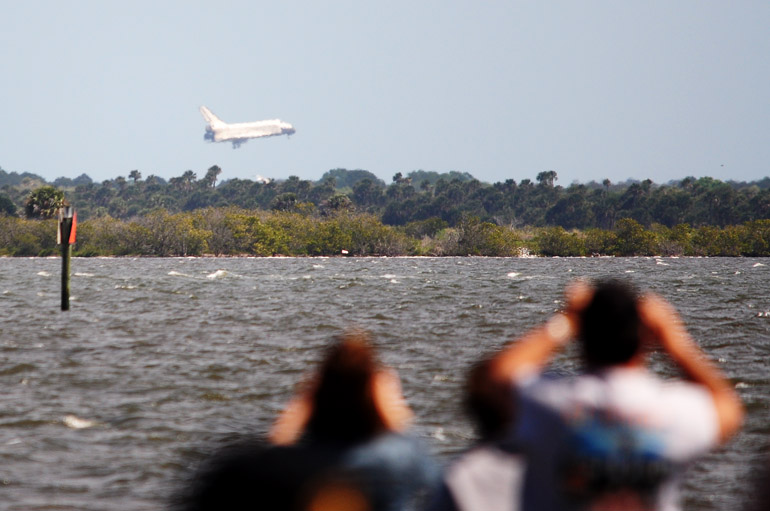
People at the end of the pier at Space View Park used binoculars to watch the landing. I'd recommend similar optics or a long camera lens if you want to make your attendance worthwhile.



No comments:
Post a Comment